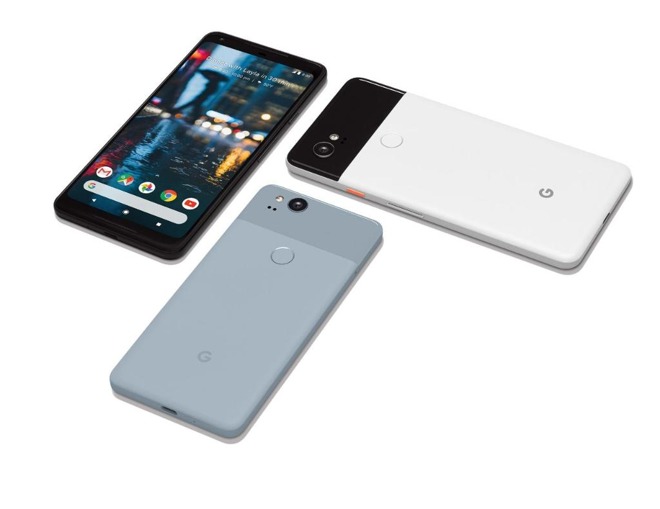
A lot of hardware was announced today; sadly, not by Apple. Today’s podcast looks at one of our sponsor’s products, a change in categories in the iOS App Store, a ton of hardware products from Google targeting Apple, and a new smart speaker from Sonos:
- Tired of the same old green or blue text bubbles? Get Color Text Bubbles (free to try, $0.99 to buy) to spark things up in Messages
- Three sections of the iOS App Store are going away
- Google announces everything but a smart, internet-enabled kitchen sink at a product reveal today
- Sonos previewed the Sonos One, which may eventually get AirPlay 2 compatibility like some other products from the speaker manufacturer

Text Version
This is Steve Sande for Apple World Today, and you’re listening to the AWT News Update podcast for October 4th, 2017. Our sponsor this month is It’s About Time Products, and this week we’re focusing on their two new products for iMessage: Color Text Bubbles and WordSwipe. Color Text Bubbles is free to try and just $0.99 for the full version. What does it do? Color Text Bubbles lets you create your own colorful Message stickers in a variety of colors, text sizes, and typefaces, then send them off to friends or save for future use. Check out the sponsorship post on Apple World Today for more information.
iOS developers were notified by Apple today that three sections are being removed from the iOS App Store, presumably because the categories are too small or irrelevant. The Catalog category is the first that will be going away on November 6, with all apps being moved to the Shopping category on that date unless a developer chooses another category. Two Games subcategories are also being eliminated. Dice and Education games will be moved to the general Games category, or can be moved by developers into other Game genres like Board, Casino, Family, Puzzle and Strategy.
Google today made a number of hardware announcements that show that the company is serious about competing with Apple and other companies. The biggest announcement was for the Pixel 2 and Pixel XL 2 smartphones at $649 and $849 respectively. The company made several digs at Apple’s iPhone 8 and X during the reveal, and showed off some features that work on both the smaller and larger models of the device. There’s a gesture call “Active Edge” in which squeezing the phone invokes the Google Assistant, meaning that selfies could be taken with one hand easily by just asking the assistant to take a photo. The Pixel 2 has a portrait mode similar to that of the iPhone 7 and 8 Plus, but uses only one lens to accomplish the portrait photos. Google touted the fact that the Pixel 2’s camera received a 98 score from DxO; better than 94 rating of the iPhone 8 Plus and Samsung Galaxy Note 8. The company also announced Google Home Max and Google Home Mini speakers. The Home Max is $399 and will be positioned directly against Apple’s upcoming HomePod speaker. The Home Mini speaker is designed to compete with Amazon’s Echo Dot smart speaker at just $49. Google is also targeting both the MacBook and iPad Pro with the $999 Google Pixelbook, which is a premium Chromebook that can operate in both laptop and tablet modes. There’s also a $99 Pen stylus to compete with Apple’s Pencil that works with the Pixelbook. To compete with Apple’s AirPods, Google released Google Pixel Buds that are enabled with Google Assistant and can offer real-time translation in 40 languages — we’re assuming that’s when they’re paired with a Pixel 2. Finally, the company released a simple $249 mini camera for parents called Google Clips, which apparently can take photos on its own by recognizing expressions, lighting and framing. Clips captures motion photos that are several seconds long, then uses machine learning to recognize faces over time and even recognize dogs and cats. Owners then decide what they want to keep and share. Whether Google’s hardware devices can actually become top sellers is another question…
As if Google joining the smart speaker market wasn’t enough, Sonos today announced the $199 Sonos One, a small speaker with a six-microphone array to give it far-field voice recognition similar to that in Apple’s forthcoming HomePod. The device will support just about any streaming service, but full voice control via Amazon’s Alexa is limited to Pandora, TuneIn, Amazon Music, SiriusXM and iHeartRadio, with support for Spotify coming later. Services like Apple Music and Spotify will support a subset of commands, including pause-play, skipping tracks, and volume up/down. Those services will require a future version of the Sonos Controller app. Sonos also noted that AirPlay 2 compatibility will be coming to some Sonos devices once it is introduced in an iOS 11 update later this year.
That’s all for today; I’ll be back tomorrow afternoon with another edition of the AWT News Update
